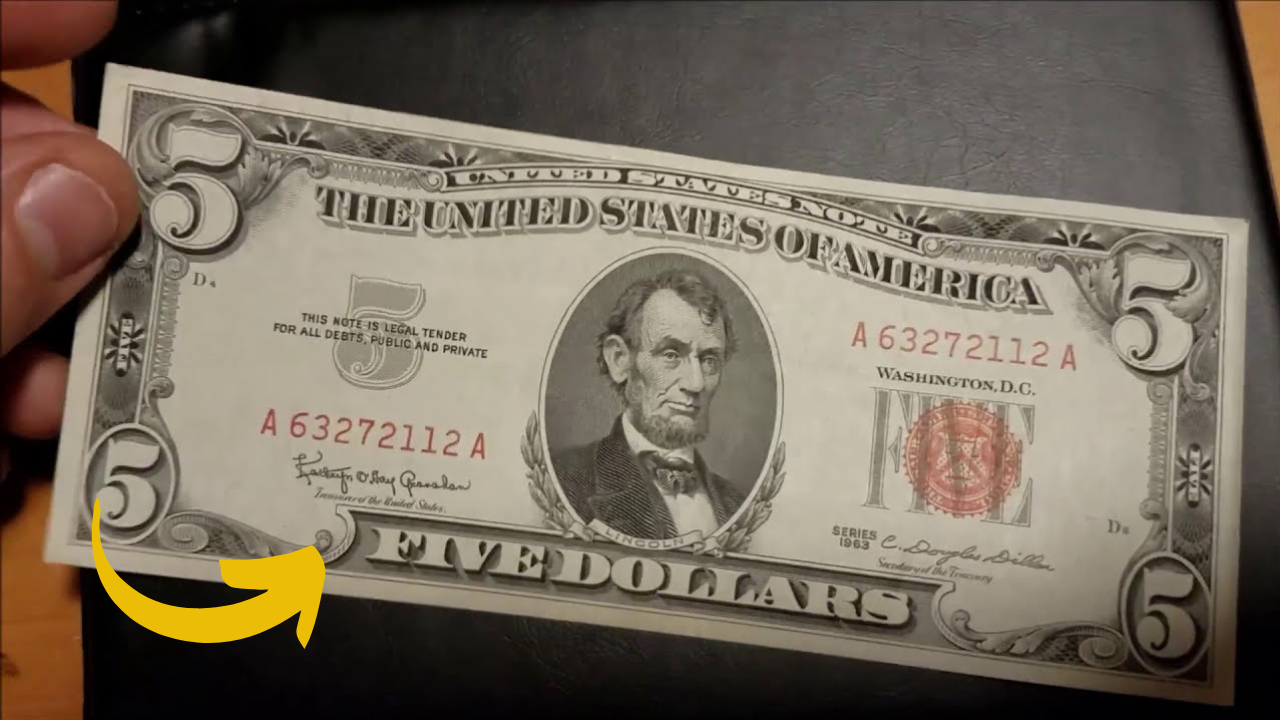1953 Red Seal $5 notes:While many people glance over old bills without a second thought, collectors and currency experts are buzzing over a quiet surge in the value of certain 1953 $5 Red Seal notes. Particularly, low-serial numbered bills from this series are being sold for over $100,000 in private auctions and numismatic circles.
If you’re wondering whether you might have one of these hidden treasures sitting in a drawer or tucked into an old wallet, here’s everything you need to know — and what to look for.
Your 1953 Red Seal $5 note could be worth over $100,000, check your wallet now
What Is a 1953 Red Seal $5 Bill?
The 1953 $5 Red Seal note is a United States Note, a type of currency that differs from the more common Federal Reserve Notes in circulation today. Its distinctive red-colored Treasury seal and serial numbers make it easily recognizable.
These bills were printed during a transitional period in U.S. currency history and are now discontinued. Though many were produced, only a small number with rare features, especially low serial numbers, are commanding eye-watering prices among collectors.
What Makes Them So Valuable?
The standout feature that drives up value is the serial number — the string of numbers found in red ink on the front of the note. Here’s what increases a note’s value dramatically:
-
Low Serial Numbers: Bills with numbers like 00000001 through 00000100 are extremely rare. The lower the number, the higher the demand.
-
Uncirculated Condition: Notes that have never been folded, torn, or marked command higher premiums.
-
Matching Serial Number Pairs: Some collectors pay extra for notes with consecutive or matching numbers.
-
Star Notes: If the serial number ends with a star (★), it’s a replacement note — often rarer and more desirable.
-
Printing Errors: Notes with misprints, ink smears, or off-center designs can also add significant value.
Recent Auction Highlights
In early 2025, a 1953 Red Seal $5 note with serial number 00000009 in uncirculated condition reportedly sold for $114,000 in a private auction. Another with serial number 00000025, though slightly worn, fetched over $80,000.
Dealers note that such sales are often discreet and handled through specialized auction houses, private collectors, or numismatic forums.
Where to Look and How to Check
You don’t have to be a seasoned collector to start searching. Here’s how to get started:
-
Go Through Old Wallets or Drawers: Many people keep old currency as souvenirs — check carefully.
-
Look for Red Seals and Series 1953: It should clearly say “Series of 1953” on the front, with red serial numbers and red Treasury seal.
-
Examine the Serial Number: If it begins with several zeroes (like 00000028), you may have something valuable.
-
Check the Condition: The more pristine the note, the higher the value.
-
Consult an Expert: Reach out to a currency dealer or auction house for authentication and valuation.
Beware of Fakes and Misleading Listings
With rising interest, some unscrupulous sellers may attempt to pass off common notes as rare. Ensure any high-value note is verified by a Professional Currency Grading Service (PCGS) or Numismatic Guaranty Corporation (NGC) before buying or selling.
Final Thoughts
The world of currency collecting is full of hidden gems — and the 1953 $5 Red Seal note is proof that what seems like an ordinary piece of paper can be worth a small fortune. If you come across one with a low serial number, you might just be holding a six-figure payday in your hands.
So next time you’re sorting through old belongings, take a second look at that vintage $5 bill. You might be richer than you think.

